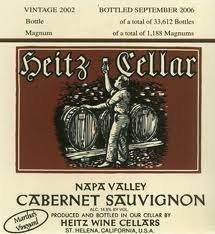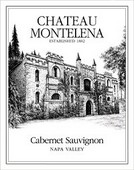(Robert Whitley’s Creators Syndicate Wine Talk column for this week.)
This week you will find a wine in my Creators Syndicate Wine Talk tasting notes that retails to the north of $100 a bottle. A couple of weeks back I also recommended the new ‘Insignia’ from Napa’s Joseph Phelps Vineyards – at a cool $200 a pop. Rest assured, when I visit my favorite wine merchant I don’t dwell exclusively in the high-rent district. I do, however, enjoy the occasional visit.
 Many readers ask why some of these wines cost so much. There is no simple answer. If I laid it at the feet of supply and demand, an astute observer of the wine scene could point immediately to any number of wines that are both obscure and pricey. I, too, roll my eyes whenever I come across a wine I’ve barely heard of that’s priced in the $100 range.
Many readers ask why some of these wines cost so much. There is no simple answer. If I laid it at the feet of supply and demand, an astute observer of the wine scene could point immediately to any number of wines that are both obscure and pricey. I, too, roll my eyes whenever I come across a wine I’ve barely heard of that’s priced in the $100 range.
You are absolutely right if you believe, as I do, that outstanding wines do not have to come with an outlandish price tag. Still, there are expensive wines that deserve our attention. They deserve our attention because of their rich history. They deserve our attention because their track record is impeccable. They deserve our attention because they’ve established a position of prominence and stature in our wine culture.
I do not drink wines of this ilk every day. Not even every month. But I like the fact that I either have a few such bottles in my cellar or can lay my hands on a bottle or two if an occasion arises that demands a memorable wine. Most of our iconic wines in this country are Cabernet Sauvignon-based reds from the Napa Valley.
For purposes of this discussion, let’s leave out the ridiculously expensive so-called “cult wines” such as Screaming Eagle, Harlan and others of that genre. Those wines can fetch upwards of $1000 per bottle and are hot commodities on the auction circuit. This conversation will be limited to iconic wines people actually drink.
When I began to assemble a list of the exceptional wines that I would be willing to spring for at $100 or more a bottle, I assumed it would be a short list. It is actually quite long, so I’ve whittled it to my Top Ten. Bear in mind that these wines are all classics that were once relatively inexpensive, increasing in price only as their reputations grew.
 1. Heitz Martha’s Vineyard Cabernet Sauvignon was among the Napa Valley’s earliest stars. Wine enthusiasts were appalled when the 1974 vintage was introduced at the scandalous price of $15 a bottle. That was in 1976.
1. Heitz Martha’s Vineyard Cabernet Sauvignon was among the Napa Valley’s earliest stars. Wine enthusiasts were appalled when the 1974 vintage was introduced at the scandalous price of $15 a bottle. That was in 1976.
2. Stag’s Leap Wine Cellars Cask 23 Cabernet Sauvignon exemplified owner Warren Winiarski’s description of Stag’s Leap (the region) Cab being an iron fist in a velvet glove.
3. Joseph Phelps Vineyards Insigia was the Napa Valley’s first proprietary Bordeaux-style Meritage red blend. And its best.
4. Spottswoode Estate Cabernet Sauvignon helped put the legendary winemaker Tony Soter on the map.
5. Robert Mondavi Reserve Cabernet Sauvignon is the flagship wine of the Napa Valley’s flagship winery.
6. Opus One was the collaboration between Robert Mondavi and Baron Philippe de Rothschild of Chateau Mouton. It was the perfect marriage of Bordeaux and the Napa Valley.
7. Beaulieu Vineyards Georges de Latour Private Reserve Cabernet Sauvignon was for decades the Napa Valley’s benchmark Cabernet Sauvignon.
8. Silver Oak Wine Cellars Cabernet Sauvignon emulated Beaulieu’s embrace of American oak cooperage and went against all conventional wisdom by aging its Cabs five years before release.
 9. Chateau Montelena Cabernet Sauvignon has been devoted to uncompromising winemaking since its inception, and to this day is among the most cellar-worthy Napa Valley Cabs.
9. Chateau Montelena Cabernet Sauvignon has been devoted to uncompromising winemaking since its inception, and to this day is among the most cellar-worthy Napa Valley Cabs.
10. Caymus Special Selection Cabernet Sauvignon has long been on everyone’s short list of Cabs that best demonstrate the concentration and complexity that can be achieved by Cabernet Sauvignon in the Napa Valley.
I’ve omitted a number of my favorite producers such as Corison, Far Niente, Nickel & Nickel, Cakebread, Beringer, Diamond Creek, Grgich and Duckhorn, but only because of space constraints. My simple point is that there is a place for these super premium wines. I would even argue that compared to the “cult wines”, these Napa Valley icons are every bit as good while substantially less expensive.
Isn’t that the very definition of value?
8
